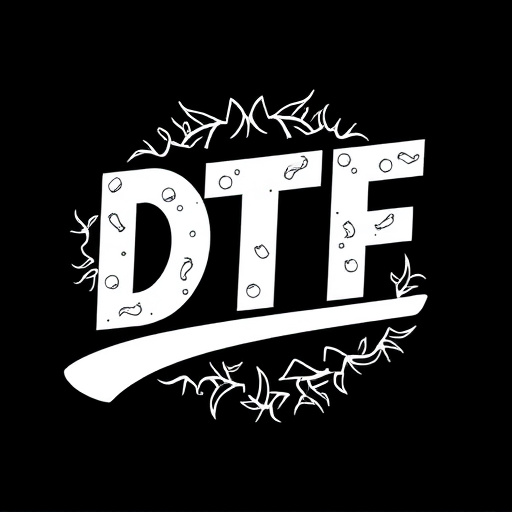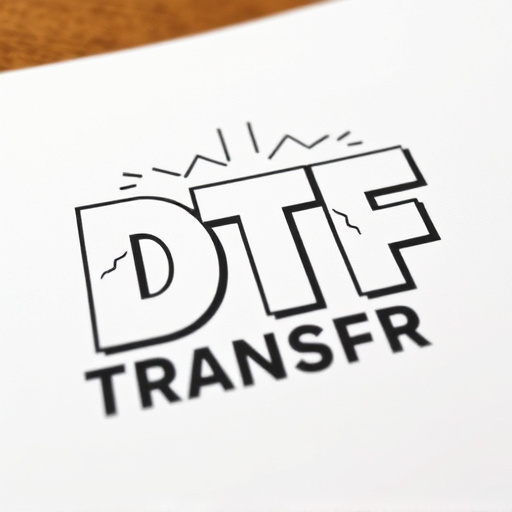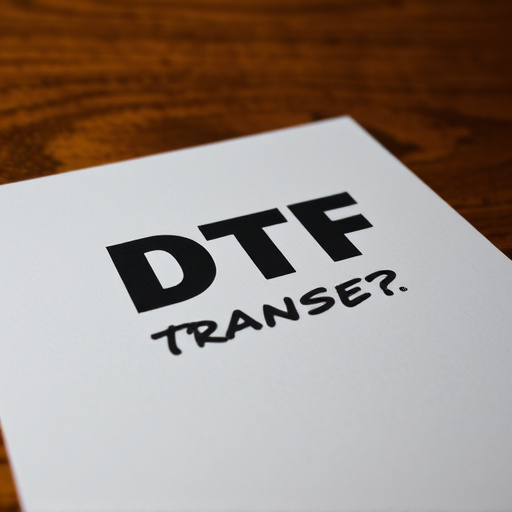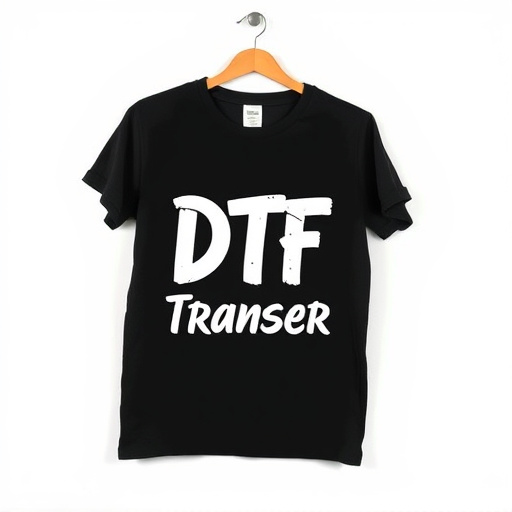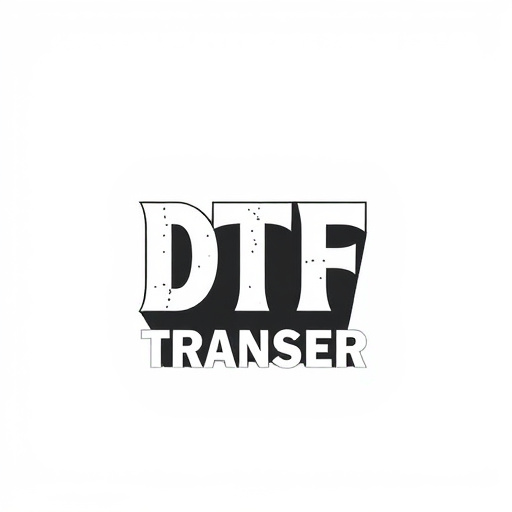Direct-to-Film (DTF) printing is a cutting-edge method transforming fabric printing, offering unparalleled versatility and quality. This technology directly applies ink to fabric via specialized film, resulting in vibrant colors, durability, and limitless design potential. DTF's advantages include precise reproduction of intricate patterns, photographs, and text, catering to both industrial production and personalized textile creations. Ideal for cotton fabrics, DTF transfers maintain aesthetic appeal after washing, streamlining production, eliminating complex setup, and offering an efficient, cost-effective solution for businesses, particularly small to medium enterprises. Key factors for high-quality results include selecting suitable ink and coating, while strategic equipment selection, substrate compatibility, and fabric preparation ensure optimal adhesion and design longevity. Rigorous Quality Assurance and Control (QAC) procedures maintain consistent quality across all stages of production, as proven in multiple case studies showcasing DTF's superior performance in clothing and home decor applications.
Direct-to-film (DTF) transfers have revolutionized cotton fabric printing, offering unparalleled quality and versatility. This article explores the intricacies of DTF technology optimized for cotton applications. From understanding the basics and untapping advantages to choosing inks and coatings, we provide a comprehensive guide. We delve into technical aspects, ensure quality control, and present inspiring case studies. Discover how DTF transfers enhance fabric printing, catering to modern demands with stunning results.
- Understanding Direct-to-Film (DTF) Transfers: A Beginner's Guide
- The Advantages of DTF for Cotton Fabric Printing
- Choosing the Right Ink and Coating for Optimal Results
- Technical Considerations: Equipment, Substrates, and Application Methods
- Quality Assurance and Control in DTF Cotton Print Production
- Case Studies: Successful DTF Transfers on Cotton Fabric
Understanding Direct-to-Film (DTF) Transfers: A Beginner's Guide
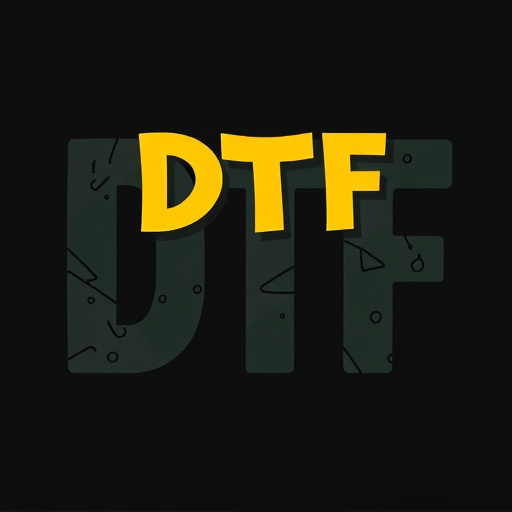
Direct-to-Film (DTF) transfers are a cutting-edge printing technique designed specifically for fabric applications. Unlike traditional printing methods, DTF involves applying ink directly onto the surface of the fabric through a specialized film. This innovative approach offers numerous advantages, including vibrant colors, durability, and a wide range of print possibilities on various cotton fabrics.
For beginners, understanding the DTF process starts with recognizing its versatility. It enables the reproduction of intricate designs, photographs, and even text with exceptional clarity. The key lies in using high-quality printing film that can withstand the heat and pressure during the transfer, ensuring the final product maintains its vibrancy and longevity. This method has revolutionized the way we print on cotton, making it an attractive option for both industrial production and personalized textile creations.
The Advantages of DTF for Cotton Fabric Printing
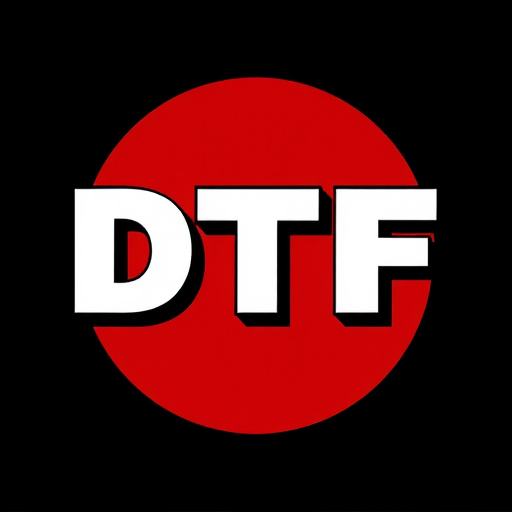
Direct-to-film (DTF) transfers offer several significant advantages for printing on cotton fabric. Firstly, it provides an incredibly high-quality print outcome, enabling intricate designs and vibrant colours that are both durable and long-lasting. This is particularly beneficial for textiles as it ensures the final product retains its visual appeal even after repeated washings.
Additionally, DTF simplifies the printing process by eliminating the need for complex setup or specialized equipment. It streamlines production, making it an efficient and cost-effective solution for businesses specializing in custom fabric printing. This technology is especially advantageous for small to medium-sized enterprises looking to cater to diverse customer demands without breaking the bank.
Choosing the Right Ink and Coating for Optimal Results
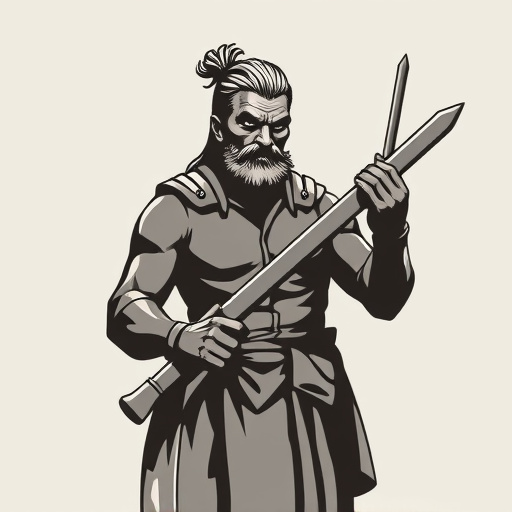
When it comes to direct-to-film (DTF) transfers for cotton fabric application, selecting the right ink and coating is paramount for achieving optimal results. The suitability of the print material, desired print quality, and end-use conditions all play a crucial role in making this decision. For cotton fabrics, specific ink types like solvent-based or water-based options can significantly impact the final output. Solvent inks offer vibrant colors and excellent durability but may require more time to dry, while water-based inks are eco-friendly, quick-drying, and suitable for a wide range of applications, albeit with potential limitations in color brightness.
Coatings, on the other hand, serve as protective layers that enhance the longevity of the printed design. They can provide additional benefits such as improved print adhesion, resistance to fading, and protection against moisture or stains. Choosing the right coating depends on factors like desired wash fastness, touch and feel requirements, and whether the fabric will be exposed to outdoor conditions. By carefully considering these aspects, users can ensure that their DTF transfers not only look stunning but also withstand the challenges of cotton fabric use.
Technical Considerations: Equipment, Substrates, and Application Methods
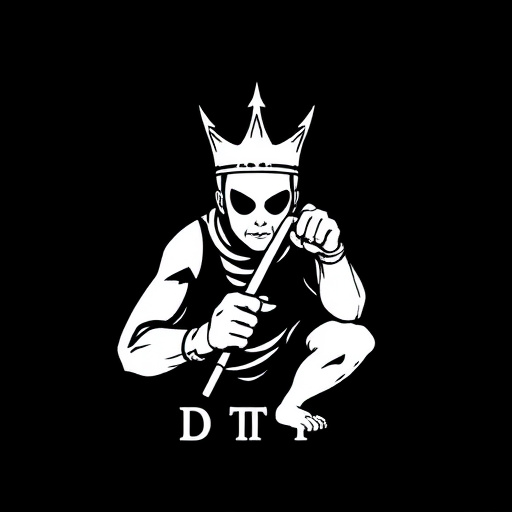
Direct-to-film (DTF) transfers for cotton fabric application require careful consideration of technical aspects to ensure optimal results. The choice of equipment plays a vital role; specialized printers designed for DTF processes offer precise color reproduction and detailed image quality, ensuring the final design is vibrant and long-lasting on the fabric. From inkjet to laser printers, the technology must align with the desired application method and substrate compatibility.
Substrates, in this context, refer to the cotton fabric, which demands specific handling. The fabric’s texture and composition should be considered when selecting application methods. Techniques such as heat press or direct printing offer versatile options, allowing for a range of design complexities and effect finishes. Proper preparation of the fabric, including cleaning and pre-treatment, is crucial to achieve adhesion and prevent ink bleeding or smudging.
Quality Assurance and Control in DTF Cotton Print Production
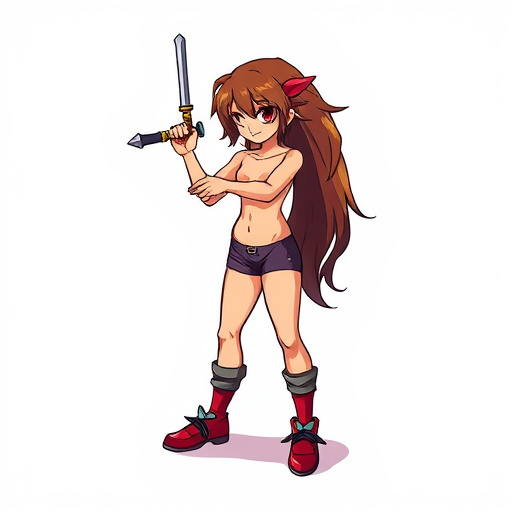
In direct-to-film (DTF) cotton print production, Quality Assurance and Control (QAC) are paramount to ensure consistent, high-quality results. Rigorous QAC procedures involve meticulous inspection at every stage of the process, from raw material checking to final product evaluation. This includes verifying ink consistency, film alignment, and color accuracy during printing, as well as examining fabric integrity and ink transfer efficiency.
Advanced imaging technologies, such as high-resolution cameras and spectrophotometers, play a crucial role in DTF cotton printing’s QAC. These tools enable detailed visual analysis and precise measurement of print quality, ensuring that each batch meets stringent standards. Furthermore, environmental conditions are closely monitored to maintain optimal printing parameters, minimizing variations that could affect output quality.
Case Studies: Successful DTF Transfers on Cotton Fabric

Direct-to-film (DTF) transfers have proven their efficacy in various case studies involving cotton fabric applications, showcasing exceptional results and opening doors to innovative printing solutions. One notable success story involves a clothing manufacturer that adopted DTF for custom textile printing. By utilizing this method, they achieved vibrant and detailed designs on cotton t-shirts, outperforming traditional screen printing in terms of speed and flexibility. The ability to print on demand allowed the company to cater to diverse customer preferences promptly.
Another compelling case highlights a home decor brand that utilized DTF transfers for creating unique cotton fabric patterns. This approach enabled them to produce limited-edition runners and pillowcases with intricate, custom designs. The high-quality prints retained their vibrancy even after multiple washes, ensuring longevity in the final products. These real-world applications demonstrate how DTF technology can enhance various sectors by offering precise, efficient, and aesthetically superior printing for cotton fabric projects.








